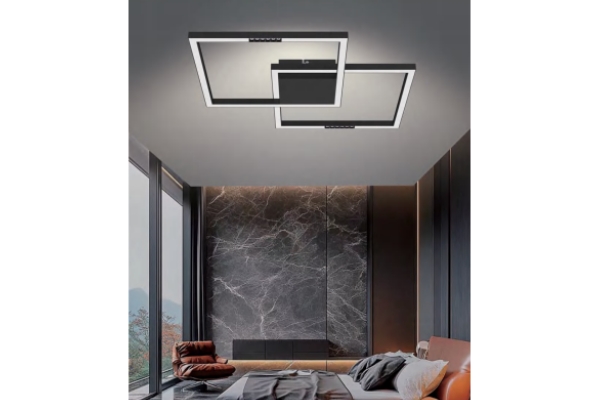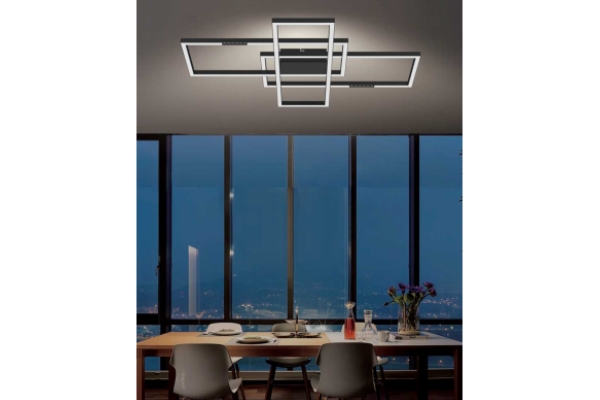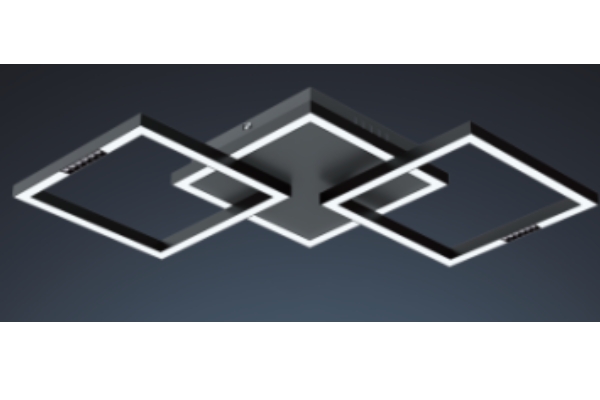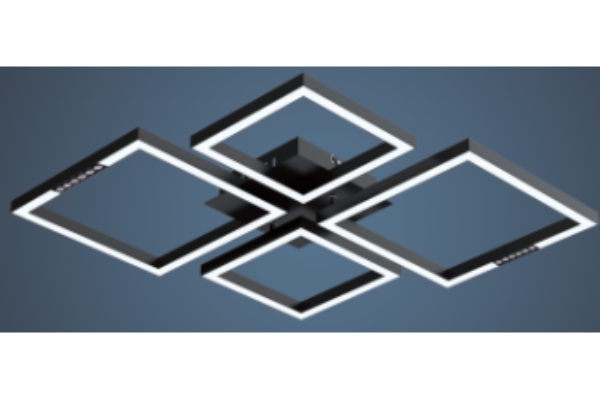What should I do if the brightness of an LED ceiling lamp decreases after a long time of use? Is there any way to restore the brightness?
Release Time : 2025-07-22
It is a common phenomenon that the brightness of LED ceiling lamp decreases after long-term use. It is usually related to factors such as the use environment and component aging. It can be gradually improved through systematic investigation. The first thing to consider is the dust accumulated on the surface of LED ceiling lamp. During long-term use, dust in the air will adhere to the surface of LED ceiling lamp cover and LED ceiling lamp beads, forming a barrier layer, which affects the penetration of light. At this time, you should turn off the power first, remove the LED ceiling lamp cover after the LED ceiling lamp cools down, and gently wipe the surface with a dry cloth or soft brush. If the LED ceiling lamp cover is dirty, you can wipe it with a small amount of neutral detergent, dry it, and then install and reset it to avoid moisture from penetrating into the internal components.
The aging of the light source itself is another important reason for the decrease in brightness. When LED LED ceiling lamp beads are powered on for a long time, the internal chip will gradually wear out, resulting in a decrease in luminous efficiency. In this case, you need to open the LED ceiling lamp to check the status of the LED ceiling lamp beads. If some LED ceiling lamp beads are found to be black and dark, it may be that a single LED ceiling lamp bead is damaged and affects the overall brightness. For the style of replaceable LED ceiling lamp board, you can buy the same model of LED ceiling lamp board for replacement; if it is an integrated LED ceiling lamp bead, the light source module needs to be replaced as a whole. Be careful to disconnect the power supply during operation to avoid the risk of electric shock.
The stability of the driving power supply will also affect the brightness output. The driving power supply is responsible for converting the mains power into the DC power required by the LED. After long-term use, the internal capacitors, resistors and other components may age, resulting in unstable output current, which in turn makes the LED ceiling lamp light flicker or dim overall. During the inspection, you can observe whether the power supply has bulging, leakage and other phenomena. If such problems exist, you need to replace the driving power supply with matching specifications to ensure that its output voltage and current are consistent with the parameters of the LED ceiling lamp bead to avoid aggravating the loss due to power mismatch.
The impact of environmental humidity and temperature on the performance of LED ceiling lamps cannot be ignored. In humid spaces such as bathrooms and kitchens, water vapor can easily enter the interior of the LED ceiling lamp, causing the circuit to be damp and oxidized, affecting the conductive performance. At this time, you need to check the sealing performance of the LED ceiling lamp. If a gap is found, you can apply a small amount of sealant to reinforce it. At the same time, ensure that the installation location is well ventilated to reduce water vapor accumulation. High temperature environment will accelerate the aging of LED components, so avoid stacking heat sources such as heaters and ovens around LED ceiling lamps to prevent heat concentration from causing accelerated brightness decay.
Poor circuit contact may also cause brightness reduction, especially for LED ceiling lamps that have been installed for a long time, the terminals may become loose due to vibration and oxidation. After turning off the main power, open the LED ceiling lamp junction box and check whether the wire connection is firm. If the terminal is found to be oxidized, it can be lightly polished with fine sandpaper and re-tightened to ensure smooth circuit conduction. For LED ceiling lamps with dimming function, it is also necessary to check whether the dimming switch is normal. A switch with poor contact will cause unstable output power, and a new switch component needs to be replaced in time.
If the above methods still do not improve the brightness, you can consider upgrading the LED ceiling lamp comprehensively. Some old styles of LED ceiling lamps may have design defects, such as unreasonable heat dissipation structure, which causes the LED ceiling lamp beads to be in a high temperature state for a long time and accelerate aging. At this time, you can replace new LED ceiling lamps with better heat dissipation performance, and choose products with aluminum heat sinks or hollow designs to improve heat dissipation efficiency and extend the service life of the light source. At the same time, the light source technology of new LED ceiling lamps is usually more advanced, with higher luminous efficiency, and can provide more sufficient light at the same power.
Daily usage habits also play an important role in maintaining brightness. Try to avoid frequent switching on and off of LED ceiling lamps, as the instantaneous current shock will aggravate the loss of LED ceiling lamp beads; turn off LED ceiling lamps when away from home for a long time to reduce unnecessary lighting time. In addition, regularly check whether the LED ceiling lamps are firmly installed to avoid poor contact due to looseness, and clean the dust every six months or so. These maintenance measures can effectively slow down the speed of brightness decline and extend the normal use cycle of LED ceiling lamps.







